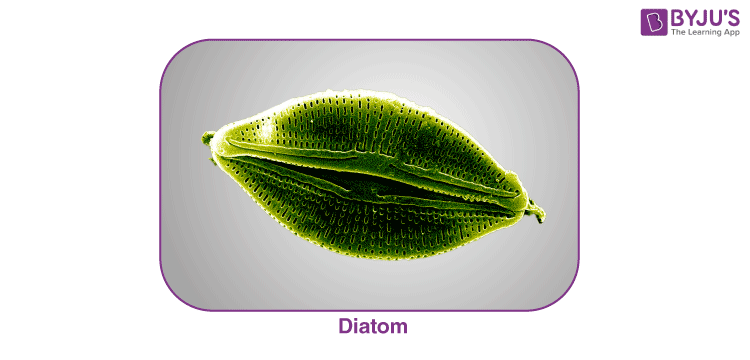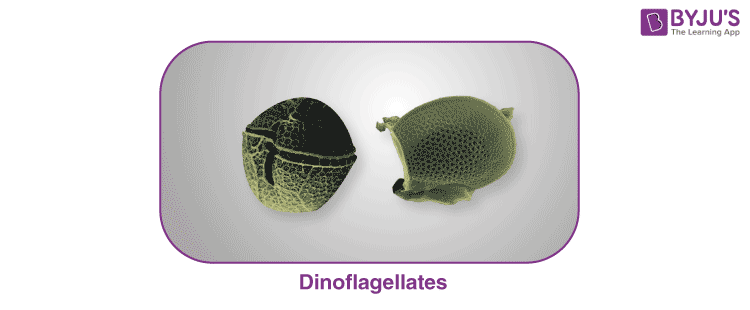Microalgae
The microscopic group of algae are termed microalgae. Algae usually comprise photosynthetic eukaryotic life forms. Microalgae are photosynthetic organisms that are found in both freshwater and marine environments. Also, they form an enormous population in the aquatic ecosystem.
Microalgae do not have true leaves, stems or roots like other plants. But, they do have chlorophyll pigments that help trap the sun’s energy. Thus, they undergo photosynthesis.
These microalgae cannot be classified as plants, fungi, animals or bacteria. So they come under a separate kingdom called Protista.
Example – Chlorella, Diatoms, Dinoflagellates, etc.
Also Read: Algae
Diatoms
Diatoms cover a significant population under the microalgae group. They are unicellular eukaryotic algae. Their outer covering is made of silica and is found in most aquatic environments.

Dinoflagellates
Dinoflagellates are another populous group of microalgae. They are primarily found in the ocean, and sometimes even in freshwater habitats. Most of the dinoflagellates carry photosynthesis. Some also ingest prey by releasing toxins.

Difference between Algae and Microalgae
Algae |
Microalgae |
| They are photosynthetic eukaryotes that can be both unicellular and multicellular. | They are unicellular eukaryotes having photosynthetic ability. |
| They include microalgae as well as macroalgae. | They only include microscopic algal lifeforms. |
| Examples – Seaweed and microalgae. | Examples – Diatoms, Dinoflagellates, Chlorella, etc. |
Visit BYJU’S Biology for more interesting topics.
Frequently Asked Questions
Does seaweed belong to the microalgae group?
No, seaweeds are macroscopic plant-like structures. They are a type of algae that grow only in marine ecosystems. Also, their population is less compared to the microalgae.
What are phytoplanktons?
Phytoplanktons include both cyanobacteria as well as microalgae. They are autotrophic planktons that can be either photosynthetic or chemosynthetic. Chemosynthetic phytoplanktons are found in the deeper layer of aquatic ecosystems. Whereas, photosynthetic phytoplanktons are found on the upper layer of the water surface.
What are prototheca?
Prototheca are a type of algae that relinquished their ability to photosynthesise. They get nutrition through parasitism. Some can even cause disease. Example – Algaemia is caused by the entry of Prototheca into the bloodstream.
What is an algal bloom?
Excessive nutrients and warm conditions of the water body results in the increased proliferation of microalgae. This excessive algal growth or algal bloom can cause harm to other aquatic organisms. Also, the pigmentation of the algae discolours the whole water body.
Extended Reading: Algae and Algal Bloom
Comments